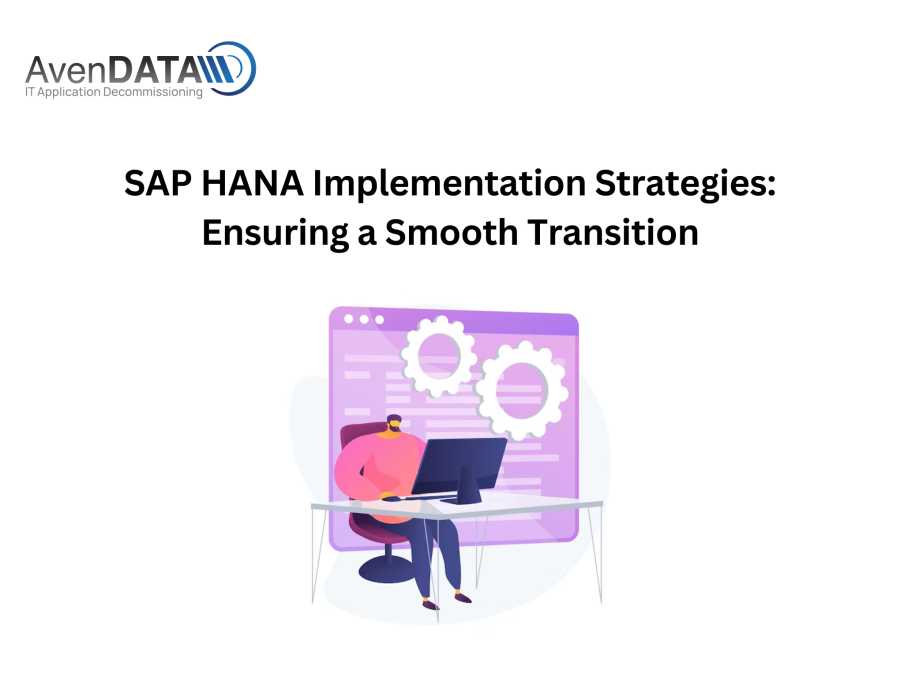Introduction: The decision to implement SAP HANA marks a significant step for organizations seeking to leverage advanced data management and analytics capabilities. However, a successful transition to SAP HANA requires careful planning, strategic considerations, and a well-defined implementation strategy. In this blog, we will delve into the key strategies for SAP HANA implementation, guiding organizations on how to ensure a smooth and effective transition to this powerful platform.
Establish Clear Objectives and Use Cases: Before embarking on SAP HANA implementation, it is essential to establish clear objectives and use cases for the platform. Define the specific business goals, such as improving real-time analytics, accelerating data processing, or enhancing operational efficiency. Identify the use cases where SAP HANA’s capabilities can deliver the most value, whether it’s in finance, supply chain management, customer relationship management, or other areas.
Comprehensive Readiness Assessment: Conduct a comprehensive readiness assessment to evaluate the organization’s infrastructure, data landscape, and existing systems. Understand the compatibility of current applications, databases, and processes with SAP HANA. Identify any potential challenges, such as data migration complexities or system integrations, and develop mitigation plans to address them proactively.
Data Migration and Cleansing: Develop a meticulous data migration and cleansing strategy as part of the SAP HANA implementation. Identify the data sources, data models, and data transformations required to migrate data into SAP HANA. Prioritize data quality and integrity, ensuring that the migrated data is accurate, consistent, and aligned with business requirements. Consider leveraging data management tools to streamline the migration process.
Infrastructure and Architecture Planning: Carefully plan the infrastructure and architecture for SAP HANA deployment. Evaluate the hardware requirements, storage, and network configurations needed to support SAP HANA’s in-memory computing capabilities. Consider factors such as high availability, disaster recovery, and scalability when designing the architecture to ensure optimal performance and resilience.
Phased Approach and Pilot Projects: Adopt a phased approach to SAP HANA implementation, starting with pilot projects or proof-of-concept initiatives. Identify specific business units or processes where SAP HANA can deliver immediate value and implement the platform in a controlled environment. Gather feedback, assess performance, and validate the impact of SAP HANA before scaling the implementation across the organization.
User Training and Change Management: Invest in comprehensive user training and change management programs to prepare employees for the transition to SAP HANA. Educate users on the new features, functionalities, and best practices for utilizing SAP HANA effectively. Foster a culture of adaptability, collaboration, and innovation to embrace the changes brought about by SAP HANA implementation.
Integration and Customization: Consider the integration of SAP HANA with existing systems, applications, and third-party solutions. Develop a strategy for seamless integration, including APIs, connectors, and middleware, to ensure interoperability and data flow between SAP HANA and other systems. Evaluate the need for custom development or extensions to tailor SAP HANA to specific business requirements.
Performance Testing and Optimization: Conduct thorough performance testing and optimization to validate the capabilities of SAP HANA in a production-like environment. Measure the performance of data processing, analytics, and reporting to identify any bottlenecks or areas for improvement. Fine-tune the configuration, indexing, and query optimization to maximize the performance of SAP HANA.
Governance and Security Measures: Establish robust governance and security measures for SAP HANA to safeguard data assets and ensure compliance with regulations. Define user access controls, data encryption policies, and auditing mechanisms to protect sensitive information. Implement data governance practices to maintain data quality, lineage, and lineage within SAP HANA.
Continuous Monitoring and Evaluation: Post-implementation, institute continuous monitoring and evaluation processes to assess the performance, utilization, and impact of SAP HANA. Regularly review key performance indicators, user feedback, and business outcomes to identify opportunities for optimization, expansion, and innovation.
Conclusion: SAP HANA implementation represents a transformative opportunity for organizations to unlock the potential of advanced data management and analytics. By following strategic implementation strategies such as establishing clear objectives, conducting readiness assessments, data migration and cleansing, infrastructure planning, phased approach, user training, integration, performance testing, governance, and continuous monitoring, organizations can ensure a smooth transition to SAP HANA. Embracing these strategies, organizations can harness the full capabilities of SAP HANA, drive operational excellence, and achieve sustainable growth in the digital era.
#AvenDATA #legacydata #SAPHana #SAPSystems #SAParchiving #dataarchiving






Comments